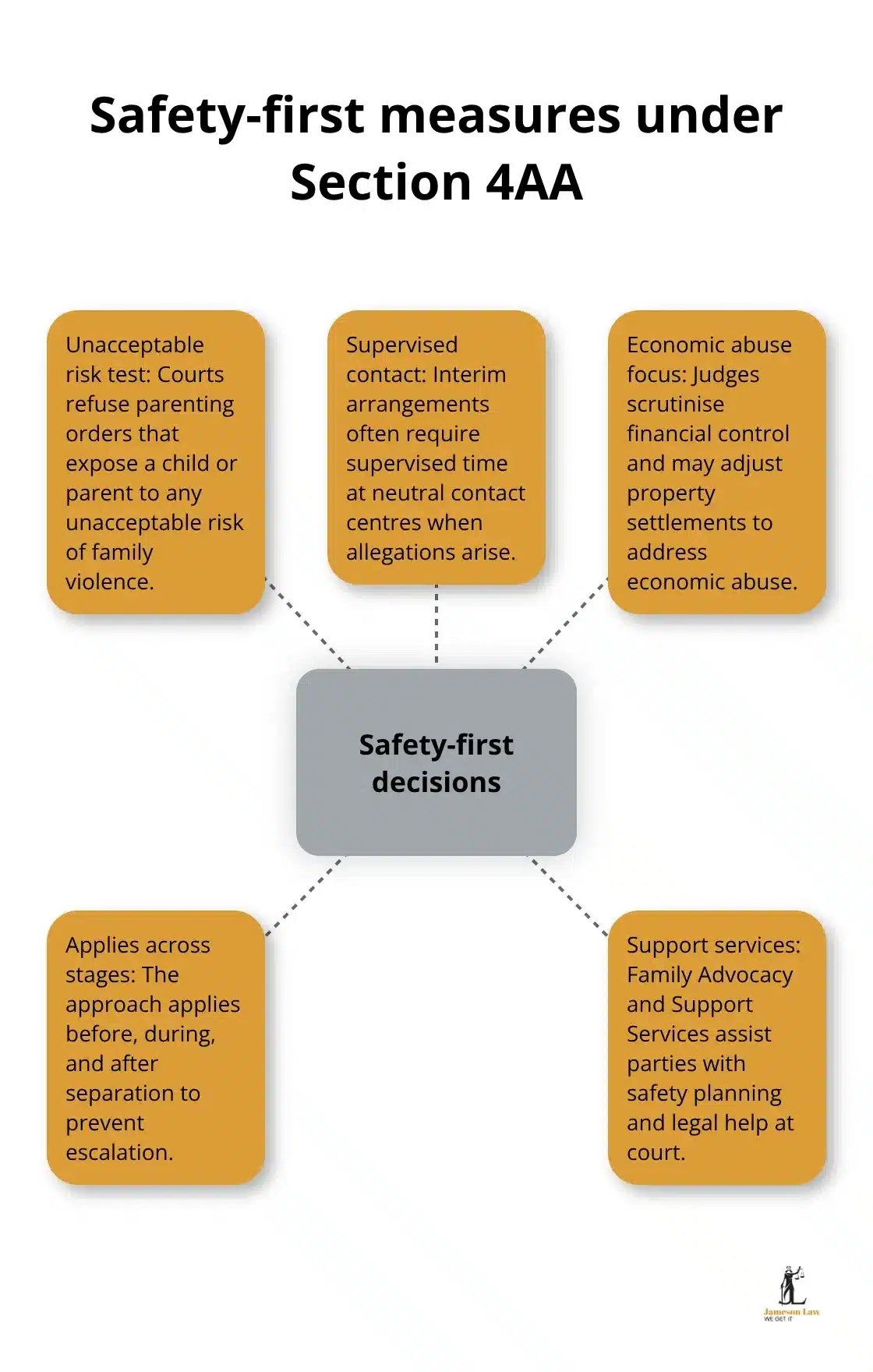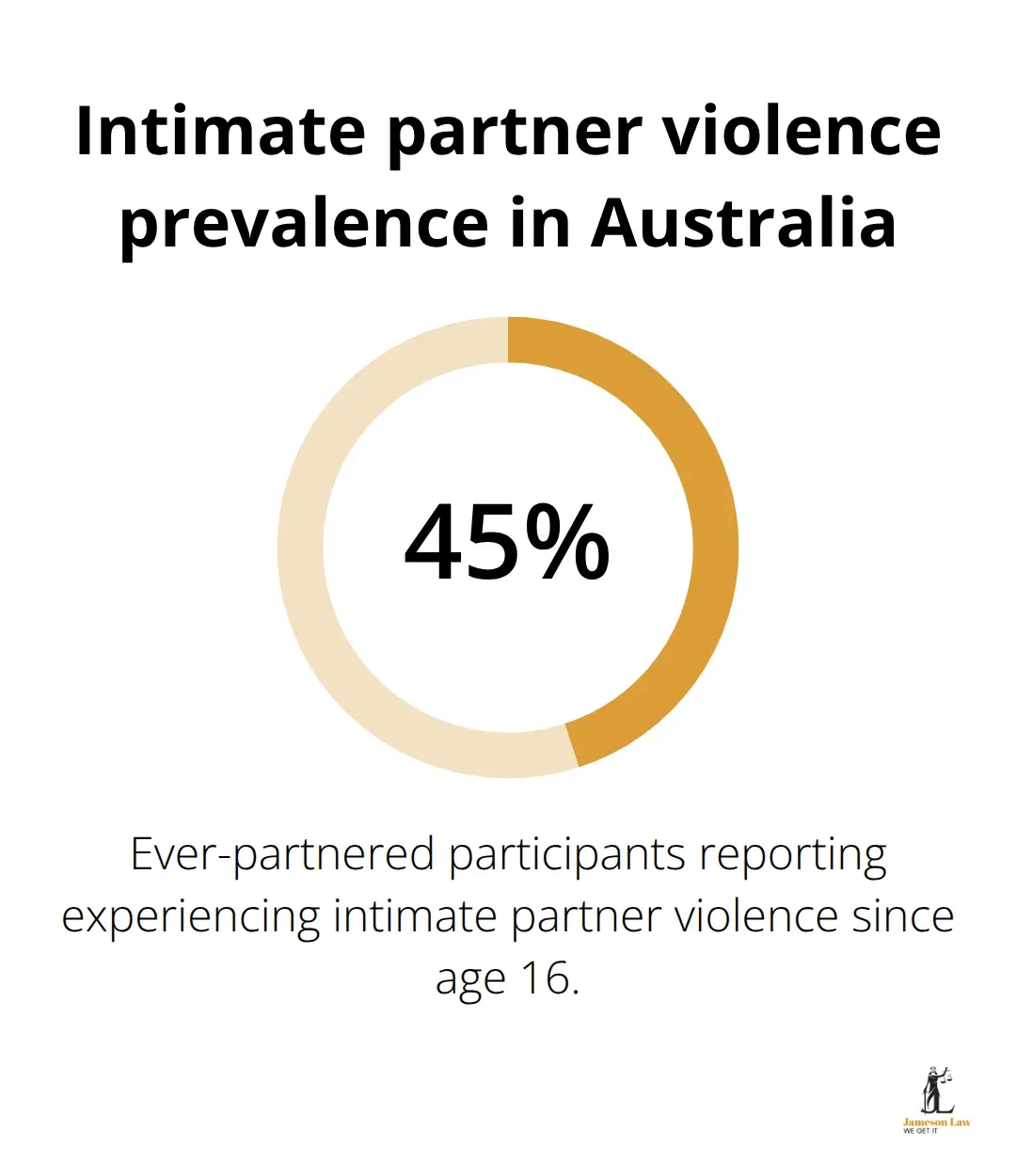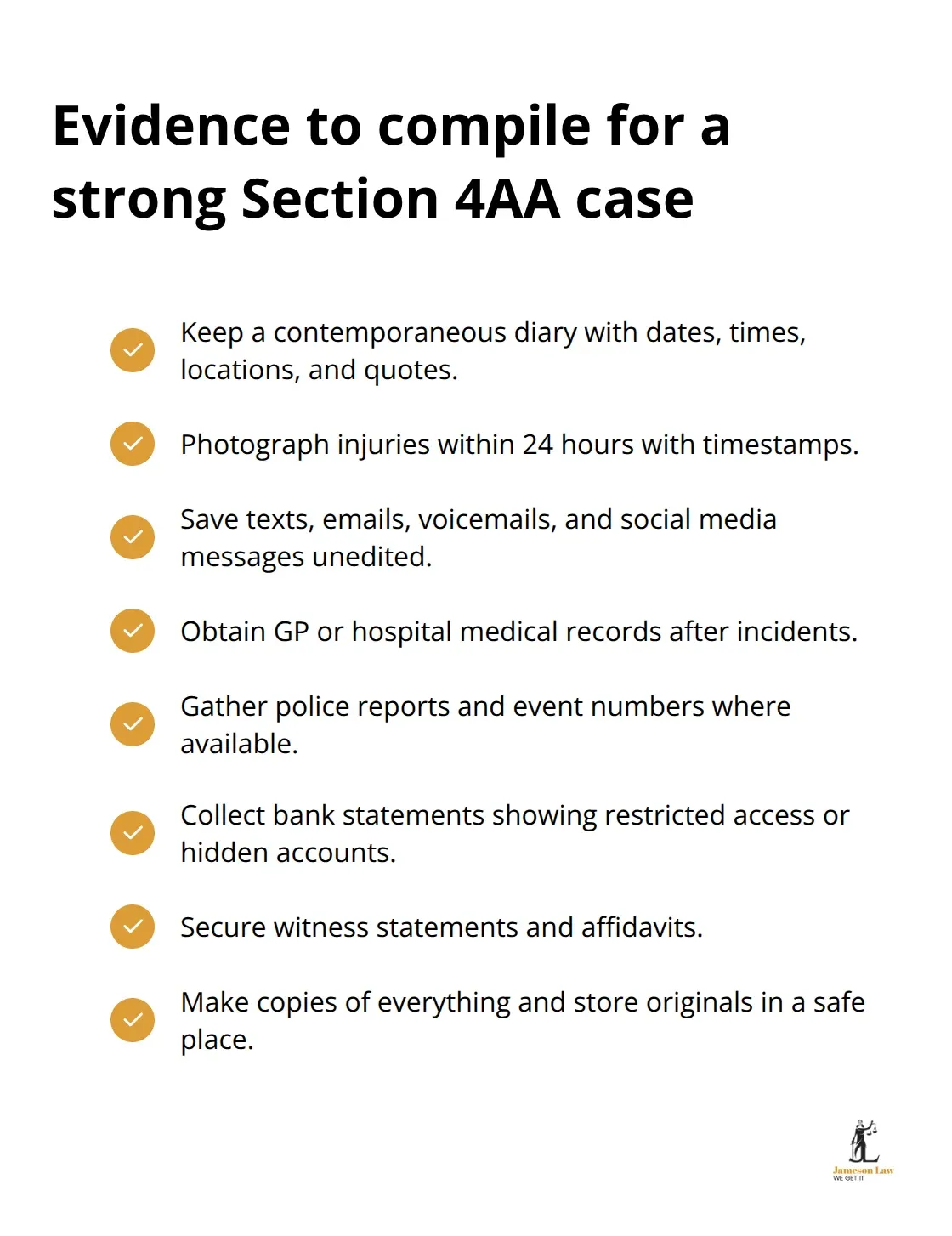Section 4AA of the Family Law Act 1975 plays a vital role in protecting families from violence during court proceedings. This provision requires courts to prioritise safety when making parenting and property decisions.
We at Jameson Law understand how complex these legal requirements can be for families facing difficult circumstances. This guide breaks down the key aspects of Section 4AA and provides practical steps for navigating family court matters effectively.
What Does Section 4AA Actually Define
Section 4AB of the Family Law Act 1975 defines family violence as behaviours that coerce or control a family member or cause fear. This definition covers physical assault, sexual assault, economic abuse, and coercion. The Federal Circuit and Family Court of Australia processes family law matters, with 120,844 marriages registered in Australia in 2024, and family violence allegations present in a significant portion of court cases.
The Court’s Safety-First Approach
Courts must prioritise safety when family violence is alleged or proven. This means parenting orders cannot expose children or parents to unacceptable risk. The court system recognises that family violence occurs at any relationship stage – before, during, and after separation. Economic abuse receives particular attention in property settlements as the Courts take family violence very seriously.

Family Advocacy and Support Services provide support and legal help to individuals affected by domestic and family violence throughout court processes.
Evidence Standards and Legal Thresholds
Family violence allegations require substantial evidence beyond mere accusations. The court examines patterns of behaviour, police reports, medical records, and witness statements. Coercive control, recognised as a significant aspect of family violence, often impacts a victim’s freedom and autonomy. Duty lawyers are available at Federal Circuit and Family Court locations across Australia to assist with these complex matters. For immediate danger situations, victims should contact emergency services on 000.
How Courts Apply Section 4AA in Practice
The court’s emphasis on protection of those affected reinforces its commitment to address the serious consequences of family violence in Australian families. Courts cannot make orders that would expose parties to family violence, which directly impacts how parenting arrangements and property settlements are structured. This safety-first mandate shapes every aspect of family law proceedings where violence allegations exist.
These practical applications of Section 4AA create specific procedural requirements that affect how family court proceedings unfold.
How Section 4AA Changes Court Decisions
Section 4AA transforms how courts approach parenting orders when family violence allegations surface. The court cannot make any parenting arrangement that exposes children or parents to unacceptable risk of family violence. This means overnight stays with an alleged perpetrator may stop immediately, even before final hearings conclude. Supervised contact becomes the standard interim solution, with facilities like contact centres that provide neutral environments for parent-child interactions. Courts prioritise child safety over traditional shared parenting principles, often resulting in one parent who receives significantly more time with children when violence allegations are substantiated.
Property Settlements Under Violence Allegations
Family violence allegations create substantial complications in property division proceedings. Courts examine economic abuse patterns when they determine fair property splits, particularly where one party controlled finances or prevented the other from accessing money. People who experience intimate partner violence may incur costs associated with separation such as moving and legal costs or healthcare costs. Courts may award larger property percentages to victims of financial abuse to compensate for lost earning capacity or career disruption. Emergency property orders can freeze assets when courts suspect financial manipulation or asset hiding by alleged perpetrators.
Court Evidence Standards
Courts require comprehensive evidence packages beyond simple allegations when they assess family violence claims. Police reports, medical records, photographs of injuries, bank statements that show financial control, and witness statements from family members or friends form the foundation of successful applications. Text messages, emails, and social media communications provide powerful evidence of threatening or controlling behaviour patterns. Courts scrutinise evidence timing carefully – fresh complaints carry more weight than historical allegations raised only during separation proceedings. Independent evidence from medical professionals, counsellors, or social workers significantly strengthens violence claims compared to unsupported personal testimony alone.
Impact on Interim Orders
Courts fast-track interim protection orders when credible violence allegations emerge during proceedings. These temporary measures can restrict contact, require supervised visits, or completely suspend parenting time until full hearings occur. Property freezing orders prevent asset disposal while courts investigate financial abuse claims. The urgency of these decisions reflects the court’s recognition that family violence escalates during separation periods, with more than 2 in 5 (45%) ever-partnered participants reporting experiencing intimate partner violence since age 16.

Understanding these court processes helps families prepare for the practical steps needed to navigate Section 4AA requirements effectively.
How Do You Build a Strong Section 4AA Case
Document everything immediately when family violence occurs. Start a detailed diary that records dates, times, locations, and specific incidents with exact quotes and descriptions. Photograph visible injuries within 24 hours with a camera that timestamps images. Save all text messages, emails, and voicemails without edits or deletions. This comprehensive documentation helps establish patterns of behaviour that courts examine when assessing family violence cases. Visit your GP or hospital after incidents to create medical records that courts value highly. Bank statements that show restricted access to funds, hidden accounts, or unexplained transactions provide concrete proof of financial abuse patterns.
Select the Right Legal Team
Choose family lawyers who specialise exclusively in domestic violence cases rather than general family law practitioners. Ask potential lawyers directly about their success rate with Section 4AA applications and request specific examples of recent victories. Experienced domestic violence lawyers understand court procedures, evidence requirements, and judicial preferences that general practitioners miss. Legal aid covers family violence matters for eligible applicants, with Community Legal Centres across Australia that provide free initial consultations. Duty lawyers at Federal Circuit and Family Court locations offer same-day assistance, but their time limits to urgent matters only.
Understand Court Protection Mechanisms
Courts issue interim protection orders when evidence supports immediate risk allegations. These orders can prevent contact, require supervised visits, or completely suspend parental arrangements until full hearings conclude. Family Advocacy and Support Services operate at major court locations and provide practical assistance with court processes, safety plans, and referrals to support services. The court cannot make any order that exposes you or your children to family violence risk, which gives you substantial leverage in negotiations. Emergency applications bypass normal wait periods, with some courts that hear urgent matters when safety concerns exist.
Prepare Your Evidence Package
Organise all documentation chronologically before you meet with lawyers or attend court. Create copies of everything and store originals in a safe location away from your home. Medical reports, police statements, and witness affidavits form the strongest evidence foundation.

Courts examine patterns of behaviour rather than isolated incidents, so comprehensive documentation over time strengthens your case significantly. Independent evidence from medical professionals, counsellors, or social workers carries more weight than personal testimony alone.
Final Thoughts
Section 4AA of the Family Law Act 1975 fundamentally changes how courts handle family violence allegations in parenting and property matters. Courts must prioritise safety above all other considerations, which means traditional shared parenting arrangements take second place when violence risks exist. Your evidence package determines success – comprehensive documentation, medical records, and independent witness statements create the strongest foundation for court applications.
Professional legal guidance becomes essential when you navigate these complex proceedings. Family violence cases require specialised knowledge of court procedures, evidence requirements, and judicial expectations that general practitioners often lack. The stakes are too high to proceed without experienced representation (particularly when children’s safety hangs in the balance).
Take immediate action if you face family violence allegations or need protection. Document everything, seek medical attention when needed, and contact Jameson Law for expert family law assistance. Emergency applications can provide immediate protection while comprehensive legal strategies address long-term safety and financial security.













